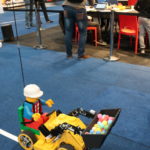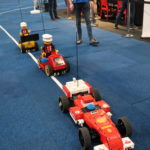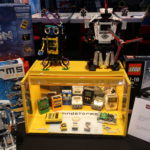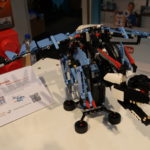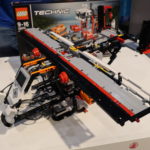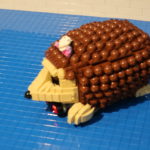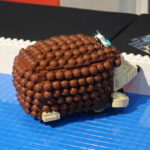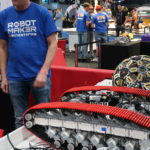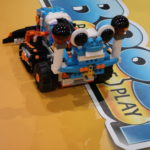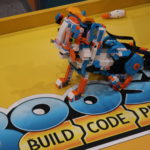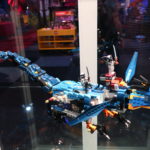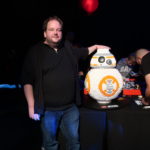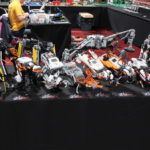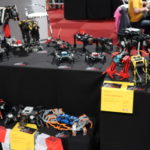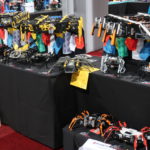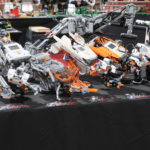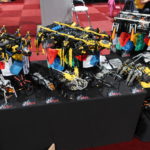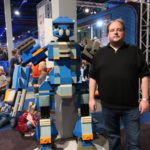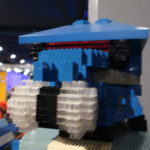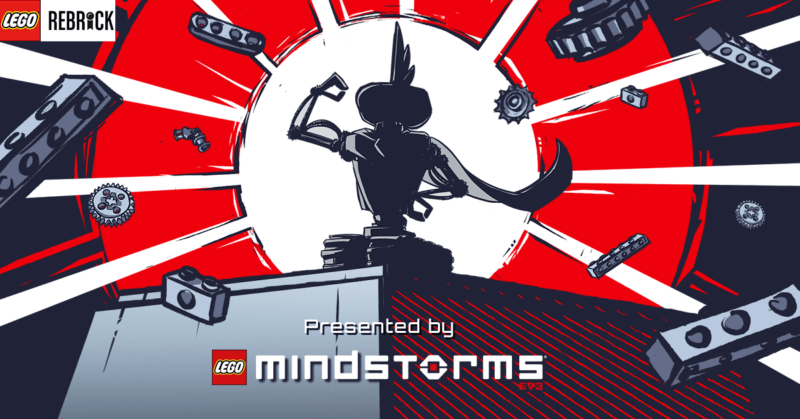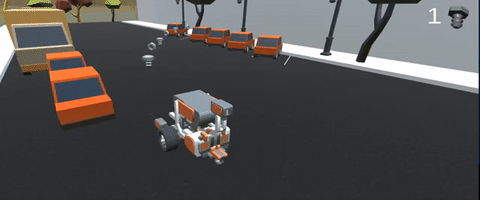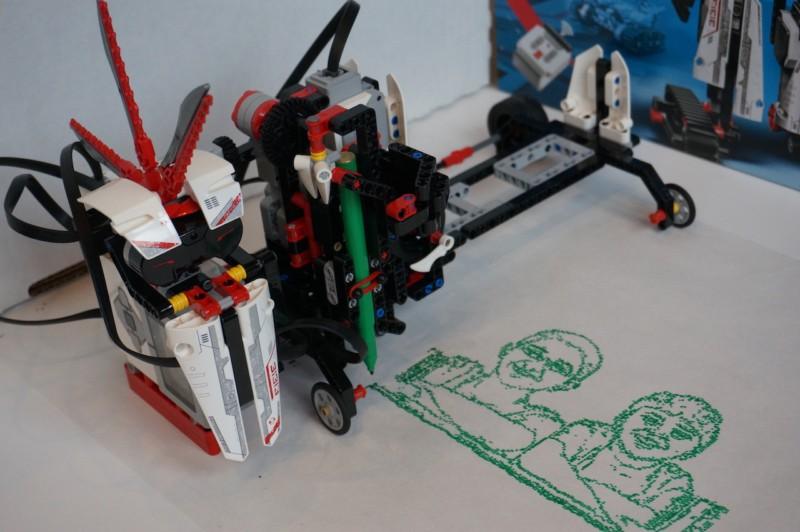Gastbeitrag von brickobotik:
Der SPIKETM Prime von LEGO Education ist inzwischen seit über einem Jahr auf dem Markt. Wir haben ihn euch in unserem großen Test ausführlich vorgestellt. Inzwischen ist auch der Inventor 51515 also die Home-Variante des SPIKETM Prime erhältlich. Bei beiden ist die Software nun auf einem adäquaten Level angekommen. Inzwischen haben wir auch unser E-Book zur SPIKETM Prime Classroom-Software veröffentlicht, das für alle, die noch Fragen zur Programmierung der Roboters haben, definitiv einen Blick wert ist.
Für uns bei brickobotik geht die Arbeit mit dem SPIKETM Prime aber trotzdem weiter. Zum einen natürlich in unseren Workshops und Fortbildungen, die wir zu diesem Roboter durchführen. Aber auch die Elektrotechnik des SPIKETM beschäftigt uns. Deshalb geben wir euch in diesem Artikel einen kleinen Einblick in unsere „brickobotik-Bastelstube“ und stellen ein Projekt vor, an dem wir gerade arbeiten.
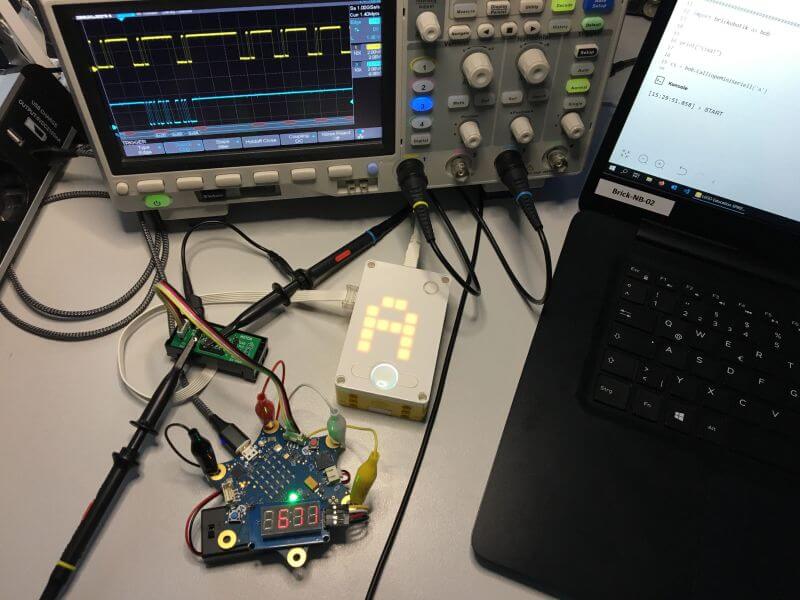
Viele von euch ist sicher aufgefallen, dass der Ultraschallsensor von SPIKETM Prime und Mindstorms Inventor im Gegensatz zu den anderen Sensoren auf seiner Rückseite zwei Torx-Schrauben zeigt. Wenn man diese herausschraubt, kann man die weiße Sensoreinheit des Ultraschallsensors entfernen und hält dann nur die schwarze Schale in der Hand. Darin kommt das Kabel des LEGO Powered-Up-Steckers an und wird auf eine Buchsenleiste verteilt.
Diese Buchsenleiste (es handelt sich um einen 8-Pin Female Header) ist mit einem Rastermaß von 1,27 mm sehr klein und es kann deshalb ziemlich fummelig werden, sie mit herkömmlichen Arduino-Kabeln zu nutzen. Darum haben wir eine passende Adapterplatine entwickelt, welche die kleine Buchsenleiste auf das typische Rastermaß von 2,54 mm übersetzt, wie man es vom Arduino, Steckbrettern, Lochrasterplatinen, etc. kennt.

Technische Details zur Platine
Die Power-Funotions-2.O-Verbindung führt sechs Kontakte:
1X 3,3 V Spannungsversorgung
1X GND
2 digitale Ein-/Ausgänge (GPIO), welche auch für UART (115200 Baud, 8N1) verwendet werden können.
Achtung! Die GPlOs liefern nicht genug Strom, um LEDs direkt zu betreiben! Es wird eine Transistorschaltung benötigt, um eine LED aus der 3,3 V Spannungsversorgung zu speisen.
2x PWM für Motoren
Achtung! Die Spannung dieser Signale kommt direkt vom Akku des SPIKETM Prime! Diese liegt nach unseren Messungen zwischen 8,4 V und 6,3 V.
Für die GPlO-Kontakte ist auf der Platine je ein Widerstand vorgesehen, welcher einen minimalen Schutz gegen falsche GPlO-Konfigurationen darstellt. Sie können aber auch einfach überbrückt werden.
Nach links und rechts sind die gleichen Kontakte noch einmal ausgeführt. So sind auf der einen Seite der Platine die GPlO-Kontakte mit Spannungsversorgung ausgeführt und auf der anderen Seite die PWM-Kontakte mit Spannungsversorgung – und zwar sowohl im Rastermaß 2,54 mm als auch im Rastermaß 2,00 mm für das Grove-Stecksystem. Für die Kontakte links und rechts ist die Spannungsversorgung von 3,3 V durch eine offene Lötbrücke unterbrochen, damit zum Beispiel bei Verwendung eines Calliope mini die unabhängigen Spannungsversorgungen beider Geräte nicht zerstörerisch konkurrieren. Die offene Lötbrücke kann bei Bedarf mit etwas Lötzinn geschlossen werden.
Neue Möglichkeiten durch die Platine
Mit der Platine ist es deutlich einfacher, weitere Sensoren oder Motoren anzuschließen und mit dem SPIKETM Prime zu nutzen. Auch eine Verbindung zu Mikrocontrollern wie dem Calliope mini ist möglich. Aber es gibt eine wichtige Einschränkung: Solche Projekte sind eher für fortgeschrittene Nutzer*innen geeignet. Sowohl die Verdrahtung als auch das Programmieren erfordern Erfahrung mit der Elektronik und den entsprechenden Sensorprotokollen.
Technische Details zur Ansteuerung
Das direkte Ansteuern der Kontakte funktioniert über die SPIKETM-Prime-App, allerdings nur in Python-Projekten und auf eigene Faust. Es gibt kein von LEGO gestelltes „UltrasonicBreakout“ Python-Modul o.ä. Beschreibungen und Anleitungen zur den entsprechenden Micropython-Klassen und -Methoden kursieren jedoch im Internet. Wer Erfahrung mit anderen Micropython-Geräten, speziell der Bedienung der Micropython-REPL, mitbringt, kann hier schnell Fuß fassen.
Bestellt eure eigene Adapterplatine!
Wir werden bei brickobotik mit der Platine weiterarbeiten, um die Verbindung mit verschiedenen Sensoren zu testen. Allen Bastler*innen, die jetzt Lust bekommen haben, ebenfalls mit Verbindungen zum SPIKETM Prime zu experimentieren, möchten wir die Möglichkeit geben, unsere Adapterplatine dafür zu nutzen. Wenn ihr also Interesse an der beschriebenen Platine habt und sie über uns erwerben wollte, dann schreibt uns eine E-Mail an [email protected]. Wir sammeln die Anfragen und wenn genügend Interessent*innen zusammenkommen, geben wir euch per Mail Bescheid, sobald die Platine vorbestellbar ist. Du willst nicht selbst basteln, bist aber interessiert an einem bestimmten Sensor, den man mit dem SPIKETM Prime verbinden könnte? Dann besuch uns auf www.brickobotik.de und lass uns einen Kommentar oder eine Nachricht mit deinen Wünschen da. Wir werden versuchen, sie für kommende Projekte zu berücksichtigen








